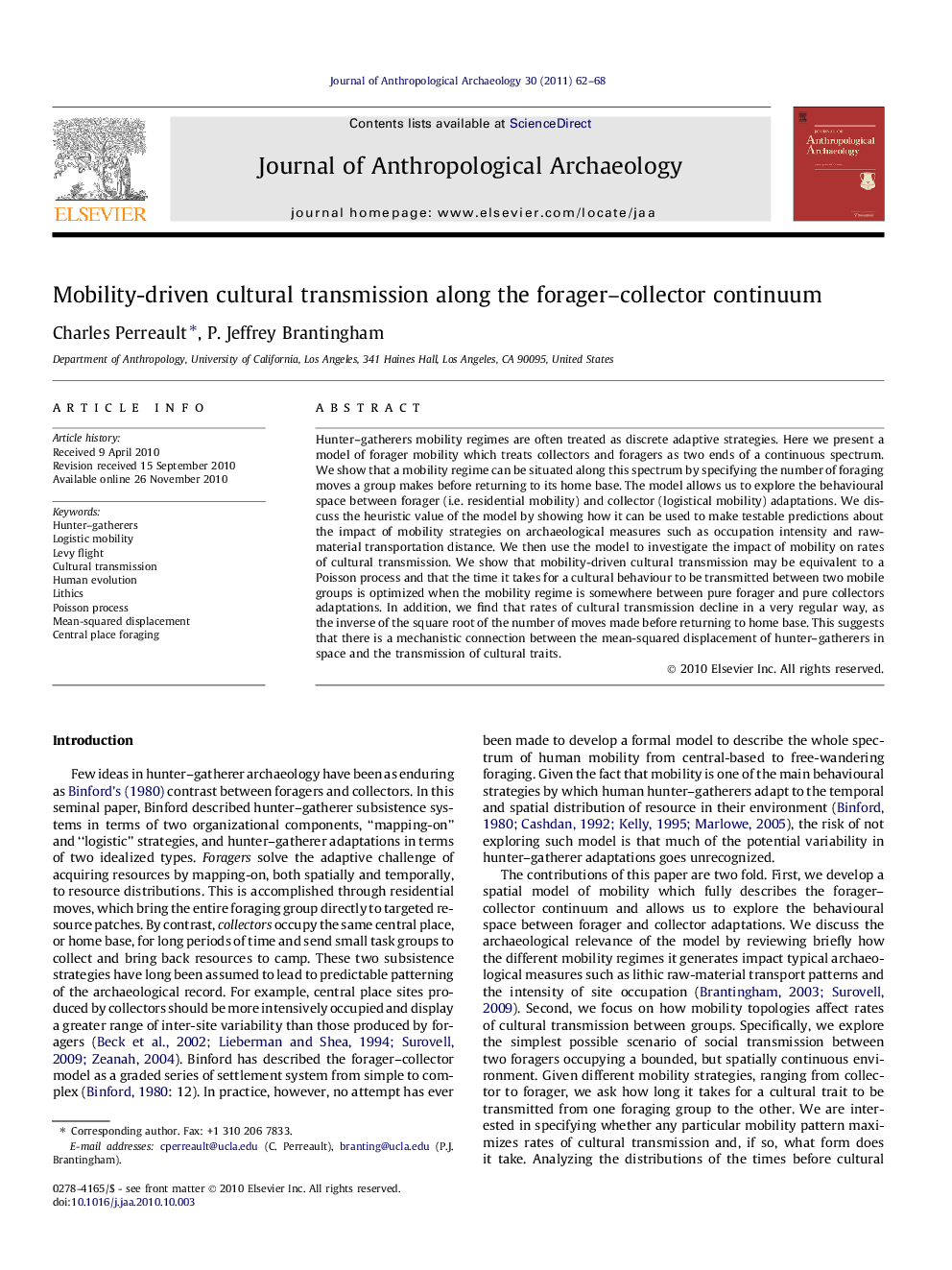| Article ID | Journal | Published Year | Pages | File Type |
|---|---|---|---|---|
| 1035058 | Journal of Anthropological Archaeology | 2011 | 7 Pages |
Hunter–gatherers mobility regimes are often treated as discrete adaptive strategies. Here we present a model of forager mobility which treats collectors and foragers as two ends of a continuous spectrum. We show that a mobility regime can be situated along this spectrum by specifying the number of foraging moves a group makes before returning to its home base. The model allows us to explore the behavioural space between forager (i.e. residential mobility) and collector (logistical mobility) adaptations. We discuss the heuristic value of the model by showing how it can be used to make testable predictions about the impact of mobility strategies on archaeological measures such as occupation intensity and raw-material transportation distance. We then use the model to investigate the impact of mobility on rates of cultural transmission. We show that mobility-driven cultural transmission may be equivalent to a Poisson process and that the time it takes for a cultural behaviour to be transmitted between two mobile groups is optimized when the mobility regime is somewhere between pure forager and pure collectors adaptations. In addition, we find that rates of cultural transmission decline in a very regular way, as the inverse of the square root of the number of moves made before returning to home base. This suggests that there is a mechanistic connection between the mean-squared displacement of hunter–gatherers in space and the transmission of cultural traits.
Research highlights► Human forager mobility regime is a continuous spectrum. ► This spectrum can be modelled as the number n of foraging moves made by the group before returning to home base. ► Varying n impacts rates of cultural transmission in a very regular way similar to the mean-squared displacement of a random walker. ► Rates of cultural transmission decline as the inverse of the square root of n.
